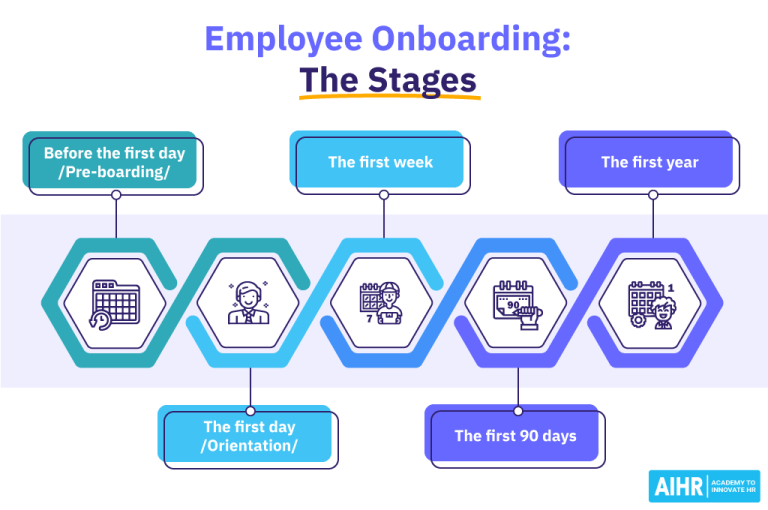Table of Contents
- Introduction to Onboarding
- The Importance of Onboarding
- Key Elements of a Successful Onboarding Program
- Common Challenges in Onboarding
- Best Practices for Onboarding
- The Role of Technology in Onboarding
- Conclusion: The Future of Onboarding
Introduction to Onboarding
Onboarding is a pivotal process in an employee’s lifecycle that helps new hires develop the skills and knowledge needed to become effective members of the organization swiftly. It encompasses various stages, from initial orientation to ongoing integration activities. While some may argue that only the hiring manager needs to be involved in onboarding, a successful onboarding program is typically a collaborative effort involving multiple departments, such as human resources, team leaders, and IT specialists, to provide a comprehensive introduction to the company.
The evolution of onboarding practices is noteworthy. In earlier times, onboarding largely involved basic introductions and administrative processing. However, organizations have since realized the immense value that a robust onboarding program can add to the workplace. This shift reflects a broader understanding of how onboarding aligns with strategic aims such as enhancing employee engagement and reducing turnover rates.
The Importance of Onboarding
The significance of onboarding cannot be overstated. Effective onboarding is crucial in molding an employee’s early impressions and experiences. Longitudinal studies have demonstrated that organizations with structured onboarding enjoy drastically higher employee retention and engagement levels. Specifically, strong onboarding is credited with boosting employee retention by as much as 82% and productivity metrics by over 70%. Furthermore, onboarding is directly linked to enhanced job satisfaction, as it provides new hires with a clear understanding of their roles and responsibilities, thereby reducing uncertainty and fostering confidence.
Companies prioritizing onboarding focus on more than just the initial weeks of employment. They are setting a long-term trajectory supporting the organization’s strategic goals. The Society for Human Resource Management underscores that onboarding is a foundational pillar for long-term organizational success, tightly correlating with individual and collective performance outcomes.
Key Elements of a Successful Onboarding Program
Successful onboarding programs share a cohesive set of core elements. They create structured plans and detailed schedules tailored to each new hire’s role and job requirements. This structured approach helps eliminate confusion and provides a clear roadmap that guides new employees as they navigate their first few months in the company. Another critical element is the establishment of precise expectations and goals. Establishing these from the outset helps eliminate ambiguity and aligns new hires’ contributions with the organization’s objectives.
Moreover, a successful onboarding process assimilates new employees into the company culture. This is essential for fostering a sense of belonging and loyalty to the organization. Cultural integration is not just about imparting technical skills—it supports the development of team coherence and enhances interpersonal relationships, which are fundamental to long-term engagement and performance.
Common Challenges in Onboarding
Despite the best efforts, onboarding can present several challenges. A common pitfall lies in the absence of a coherent plan, leading to inconsistencies and gaps in the onboarding experience. Furthermore, miscommunication between departments can result in delays and a lack of support that new hires need to thrive. Another significant challenge is the lack of continuous feedback, which, if not addressed promptly, can lead to dissatisfaction and attrition.
To counter these challenges, organizations must establish clear communication channels and regularly solicit feedback from new employees. This two-way communication ensures that issues are swiftly identified and rectified, paving the way for a positive and effective onboarding experience.
Best Practices for Onboarding
Incorporating best practices into the onboarding process can yield significant dividends. Customizing onboarding plans to meet the unique needs of different roles and team structures is essential for maximizing relevance and engagement. Moreover, implementing mentorship programs and buddy systems adds a personalized touch, offering new employees a supportive network and facilitating smoother transitions into their new roles.
An inclusive approach to onboarding cannot be overlooked. Organizations that emphasize inclusivity in their onboarding programs demonstrate a commitment to diversity and value each individual’s unique contribution. This commitment enriches the organizational culture and enhances performance and innovation. The Harvard Business Review highlights that inclusive onboarding practices can significantly improve the experience and outcomes for all involved.
The Role of Technology in Onboarding
Technology has transformed the onboarding landscape, offering tools and solutions that simplify and enhance the process. Digital platforms and mobile apps streamline the administrative tasks associated with onboarding, while e-learning modules offer flexibility and scalability in training. Technology also facilitates virtual onboarding environments, which have become increasingly vital, supporting seamless remote engagement and interaction.
These tech-enabled solutions make onboarding more efficient and heighten engagement by offering interactive and personalized learning experiences. As the workplace evolves, leveraging technology for onboarding will remain critical in maintaining a dynamic and adaptive workforce.
Conclusion: The Future of Onboarding
As the workplace continues to witness rapid transformations, the future of onboarding must adapt accordingly. Emerging trends point towards more personalized, tech-driven, and flexible onboarding processes. Organizations that can harness these innovations will set themselves apart, ensuring their new hires experience a richly supportive and engaging start. By prioritizing adaptive onboarding strategies, companies support incoming talent and reinforce their position at the forefront of their industries. In essence, effective onboarding remains a critical factor in cultivating a workforce that is both engaged and equipped to meet future work challenges.

